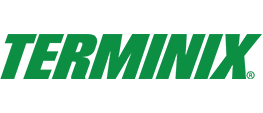
One of the strongest money-back guarantees in the industry
Rigorous technician training program
Initial inspections for termite and bed bug infestations
Free no obligation quote
Same day service
if you call by noon30 Day money-back guarantee

Over 90 years of industry experience with a focus on termites
Special termite bond contract provides homeowners significant cost savings
Widely available throughout the United States with 24/7 customer support
Save $50
on Pest Control PlanFree Inspections
Save 10%
on Rodent and Wildlife Control
Recommended for wildlife removal by local and state agencies
Provides bilingual support line to ensure customer satisfaction
Operates in 29 states across the eastern U.S., Midwest, and Southwest
Insured and Bonded Services
100%
Satisfaction GuaranteeOpt-Out Annual Contracts

Variety of treatment options for pests and wildlife, including bed bugs
Nearly 90 years of experience in the pest control industry
Free Return Service between regularly scheduled visits
Nearby Cities
- Minneapolis, MN
- Rochester, MN
- Duluth, MN
- Eden Prairie, MN
- Burnsville, MN
- Lakeville, MN
- Minnetonka, MN
- St Louis Park, MN
- Moorhead, MN
- Mankato, MN
- Shakopee, MN
- Inver Grove Heights, MN
- Cottage Grove, MN
- Andover, MN
- Savage, MN
- Winona, MN
- Prior Lake, MN
- Owatonna, MN
- Chaska, MN
- Chanhassen, MN
- Champlin, MN
- Elk River, MN
- Austin, MN
- Hastings, MN
Service Area Map
Pest Control in Minnesota
Minnesota residents frequently encounter several common pests that can cause nuisance and potential health risks. One such pest is the mosquito, which thrives in the state's humid and temperate climate. These pesky insects not only leave itchy bites but can also transmit diseases such as West Nile virus and Zika virus. Residents often seek professional pest control services to help reduce mosquito populations and protect their outdoor living spaces.
Another common pest in Minnesota is the mouse. As temperatures drop during the winter, mice seek shelter in warm homes and buildings, posing a threat to both property and human health. Mice can chew through electrical wires, cause structural damage, and contaminate food with their droppings. Professional pest control services can help identify and seal potential entry points, as well as implement effective trapping and extermination methods to rid homes of these unwanted guests.
Lastly, residents of Minnesota also face issues with ants, particularly carpenter ants. These destructive pests are attracted to damp and decaying wood, often infesting homes and causing damage to structural elements. With their ability to establish large colonies, carpenter ants can become a significant problem if left untreated. Pest control experts can identify and eliminate these ant colonies, preventing further damage and ensuring peace of mind for homeowners.
While dealing with pests can be frustrating, seeking professional pest control services can help residents of Minnesota effectively address these issues and maintain a pest-free living environment.
Pest Infestations All Year Long in Minnesota
Pest control services are crucial in Minnesota throughout the year to ensure a pest-free environment and minimize the potential risks associated with infestations. By addressing pest issues promptly, homeowners and businesses can protect their properties and maintain a healthy living or working environment. Here is a guide to the importance of pest control services in Minnesota, month by month:
Remember that consistent pest control efforts throughout the year are key to maintaining a pest-free environment in Minnesota.
Pest Resources in Minnesota
Minnesota is home to a variety of state and regional resources that can assist residents with pest, wildlife, and animal control, as well as invasive plant and animal issues. One such resource is the Minnesota Department of Natural Resources (DNR), which provides valuable information and guidance on a wide range of wildlife-related topics. Their website offers comprehensive resources and contact information for dealing with common pests and wildlife concerns. Residents can reach the DNR's Wildlife Division at (651) 296-6157 for further assistance.
Additionally, the University of Minnesota Extension offers expert advice and resources on managing pests, including insects, rodents, and wildlife. Their website provides extensive information on pest identification, prevention, and control methods. Residents can also find contact information for local extension offices across the state, which offer further assistance and guidance tailored to specific regional challenges. The University of Minnesota Extension can be reached at (800) 232-9077.
For invasive plant and animal issues, the Minnesota Invasive Species Advisory Council (MISAC) is an authoritative resource. They provide information on identifying and reporting invasive species, as well as strategies for prevention and management. Residents can access their website for detailed resources and contact information to report invasive species sightings. Remember, early detection and reporting are crucial in combating the spread of invasive species.

